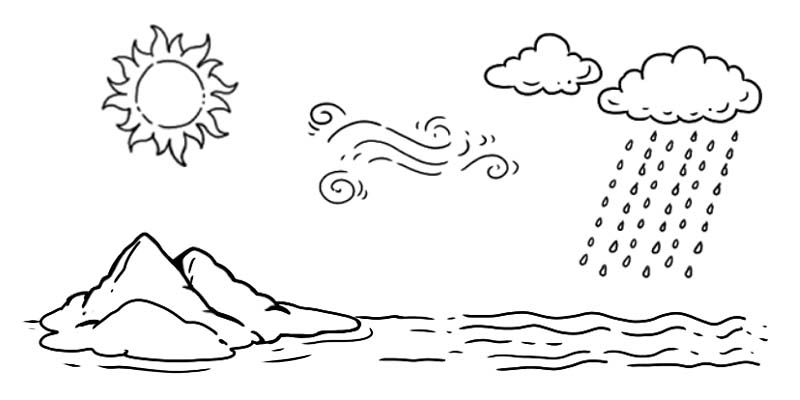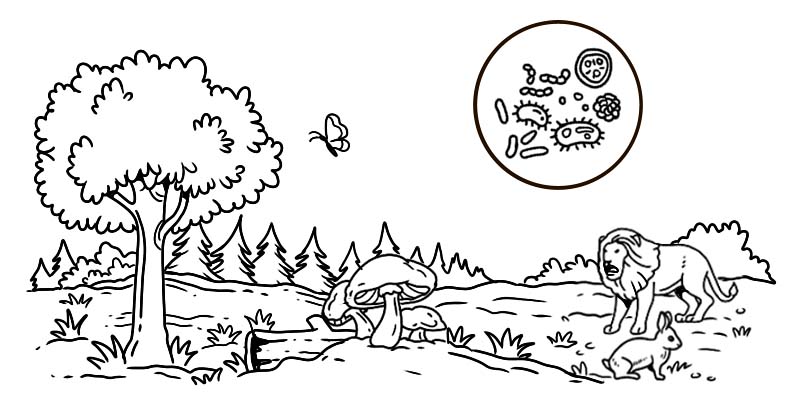What is an Ecosystem?
The ecosystem includes all of the living things (plants, animals, and organisms) in a given area, interacting with each other, and also with their non-living environments (weather, earth, sun, soil, climate, and atmosphere).
All energy in the ecosystem comes from the sun.
Components of ecosystem
All organisms live in a complex environment that includes Abiotic and Biotic components.
1. Abiotic components

The nonliving components of the environment such as water, light, temperature, nutrients, soil.
Abiotic components can be grouped into three categories:
- Physical factors: Sunlight, temperature, rainfall, humidity, and pressure. They sustain and limit the growth of organisms in an ecosystem.
- Inorganic substances: Carbon dioxide, nitrogen, oxygen, phosphorus, sulfur, water, rock, soil, and other minerals
- Organic compounds: Carbohydrates, proteins, lipids, and humic substances. They are the building blocks of living systems and therefore, make a link between the biotic and abiotic components.
2. Biotic components

The living components of the environment such as other organisms as foods, other resources, or predators.
Biotic components are further grouped into three categories:
- Producers: The green plants manufacture food for the entire ecosystem through the process of photosynthesis. Green plants are called autotrophs, as they absorb water and nutrients from the soil, carbon dioxide from the air, and capture solar energy for this process.
- Consumers: They are called heterotrophs and they consume food synthesized by the autotrophs. Based on food preferences they can be grouped into three broad categories. Herbivores (e.g. cow, deer, and rabbit, etc.) feed directly on plants, carnivores are animals that eat other animals (eg. lion, cat, dog, etc.) and omnivores organisms feeding upon both plants and animals e.g. human, pigs and sparrow.
- Decomposers: Also called saprotrophs. These are mostly bacteria and fungi that feed on dead decomposed and the dead organic matter of plants and animals by secreting enzymes outside their body on the decaying matter. They play a very important role in the recycling of nutrients. They are also called detrivores or detritus feeders.
